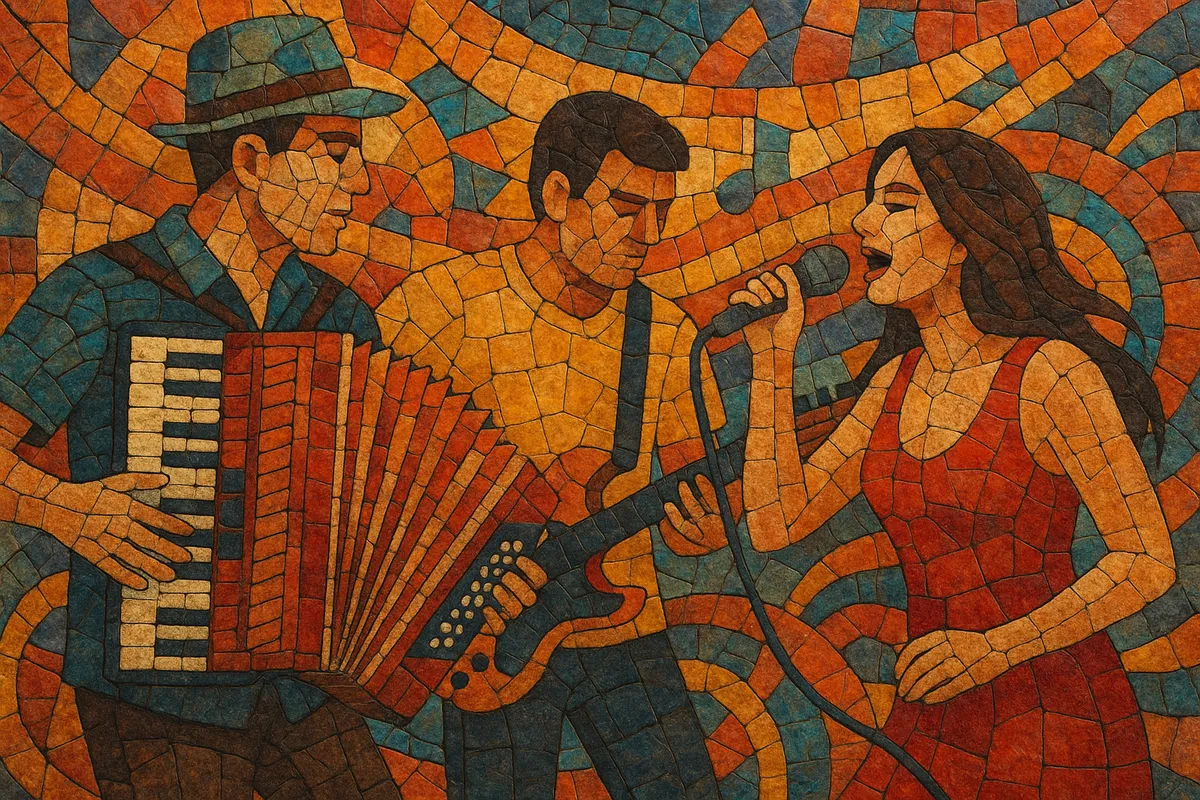Forró eletrônico is a modern, band-driven evolution of traditional Northeastern Brazilian forró that replaces or augments acoustic instrumentation with keyboards, electric bass, drum kits, and programmed percussion.
It favors glossy, radio-ready arrangements and catchy pop hooks while retaining core forró dance rhythms such as baião, xote, and arrasta-pé. The style often leans into romantic and party themes, with strong choruses, call-and-response refrains, and high-energy stage shows.
Emerging in the 1990s, it became synonymous with large touring bands and dedicated dance venues, spreading from the Northeast across Brazil and into the Brazilian diaspora.
Forró eletrônico emerged in Northeast Brazil in the early-to-mid 1990s as bands began modernizing classic forró formats with electric bass, drum kits, and keyboards. Pioneering groups such as Mastruz com Leite (Ceará) demonstrated that traditional rhythms like baião and xote could coexist with pop songcraft and electronic timbres. Independent regional labels and specialized dance venues (casas de forró) helped solidify a circuit for these larger, show-oriented ensembles.
Through the 2000s, the style expanded rapidly, with bands like Limão com Mel, Magníficos, Calcinha Preta, Aviões do Forró, and Saia Rodada driving national radio play, DVD releases, and intense touring schedules. Professionalized production, polished vocal harmonies, and romantic storytelling broadened the audience. Media companies and event promoters from the Northeast amplified the genre’s reach across Brazil, while satellite TV, FM radio, and later YouTube made live performances and music videos widely accessible.
In the 2010s, forró eletrônico continued to intersect with adjacent regional pop forms and dance music aesthetics, setting the stage for newer offshoots and dialogues with contemporary scenes. Acts associated with the style collaborated with sertanejo and urban pop artists, and the genre’s template—danceable grooves, synth-led arrangements, and earworm refrains—helped pave the way for styles like piseiro. Today, classic bands remain staples of large festivals and dance halls, while younger artists update the sound with modern production techniques and digital-first promotion.


